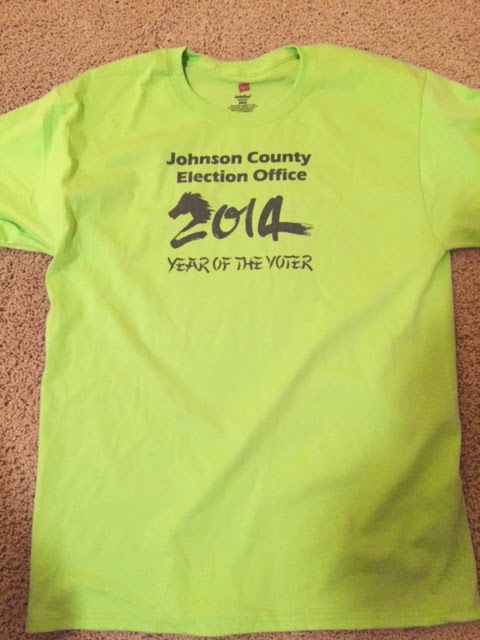But, here we are, short-staffed and run down following the November election and in the middle of a much smaller December election in Roeland Park.
Yet, a monster set of elections await us, with ballots going out the first week of January to about 330,000 voters in five of the six school districts in Johnson County.
If half come back, we will be processing 165,000 pieces of paper, plus the envelopes, in roughly 16 days.
That's more than 10,000 ballots returned daily, and each one of the envelopes has to be checked into our voter registration system and have the returning signature matched against the voter's record.
Then, the ballots have to be scanned and tabulated. Never having paper at the polls, at least in the last 50 years, we operate with a handful of scanners at our office.
At most, these scanners can scan 1,000 ballots an hour, but a likely throughput for the four we have is really about 2,500 an hour.
We've never processed this many paper ballots before. Our office used paper ballots for advance voting in the presidential election of 2004, with a two-page ballot, and that resulted in nearly 200,000 pieces of paper.
That was just before I came to this job and I still hear horror tales from that process.
Job One here is to, well, get the job done. We've never pulled something like this off before, and the fact that it falls right between two countywide elections (spring is comin') makes this even rougher.
In fact, the election itself ends the day after the spring election filing deadline.
Job Two is to get the job done as economically as possible. Incremental costs are passed on to the school districts, while fixed costs--such as staffing and equipment purchases--are borne by the county.
So, that creates two problems for us--at least two phases of one problem and another problem, actually.
The first problem is, how many part-time election workers do we appoint to handle the load? Part-time is likely the wrong phrase--temporary, full-time workers. We probably could use at least 75. In November we had 12.
We only have 20 stations for envelope check-in. We'll pretty much be needing someone sitting at those stations the entire time. |
| Each signature on the return envelopes must be verified. |
Can we get by with fewer, and how?
If only we had one of those fancy high-speed scanners that's being touted with some of the next-generation voting systems. Our system isn't compatible with such a thing but if the system was, we could scan much, much faster--10,000 in just a couple of hours.
Or....
Somewhere in the Royals' World Series euphoria, we decided to take a major leap here, using an entirely new voting system for this election. It's akin to buying a big-screen television just before the Super Bowl.
This isn't the major leap it could be, in that we aren't going to have any election at the polls, but we are going to set up the election and operate it with a new tabulation system. The system will use a high-speed scanner.
Election administrators don't roll like this. Where's the mock election? What are we doing for redundancy? These are typical, internal questions.
Our equipment vendor, to the redundancy point, is a four-hour drive away. If the system can't be warrantied to be fail-safe for the first 20 days of its life, there's an issue there, anyway. If the system explodes, I'm sure we will have another one within a half-day.
The system has been certified federally and in Kansas, so that's not a risk. It's just that we're making this huge transition in December for an election that will be over on Groundhog Day, the day of the elections' canvasses.
Unlike the movie, the day after Groundhog Day, and every day after, will not be the same.
Once this election is over, we'll have a high-speed taste test, an understanding of a new system that we will evaluate for our ultimate equipment replacement, and a very large paperweight until our next large mail-ballot election, likely in late 2015 or later. It's not quite a throwaway unit, but close.
The big question is the reconciliation between the scanner costs and the savings of people. That's roughly going to be a wash. Remember, though, Job One is to do the job.
And this job requires that we not bring a rinky-dink scanning system to high-speed scanner fight.
So, the battle begins. We hope to have the unit on-site this week to begin preparations.
It's funny--that Super Bowl comparison: in November elections, the media likes to ask us is if this is our big moment, our Super Bowl.
I'm sure, given all we have going on, our staff would much rather not have this behemoth group of elections in January. But, we've never done something like this before, and in February, conducting the canvass they day after the NFL's Big Game, we're going to feel pretty good about what we accomplished.
That sounds like a Super Bowl party to me.









- Follow Me on Twitter!
- "Like on Facebook!
- Join Me on Linkedin!
Contact